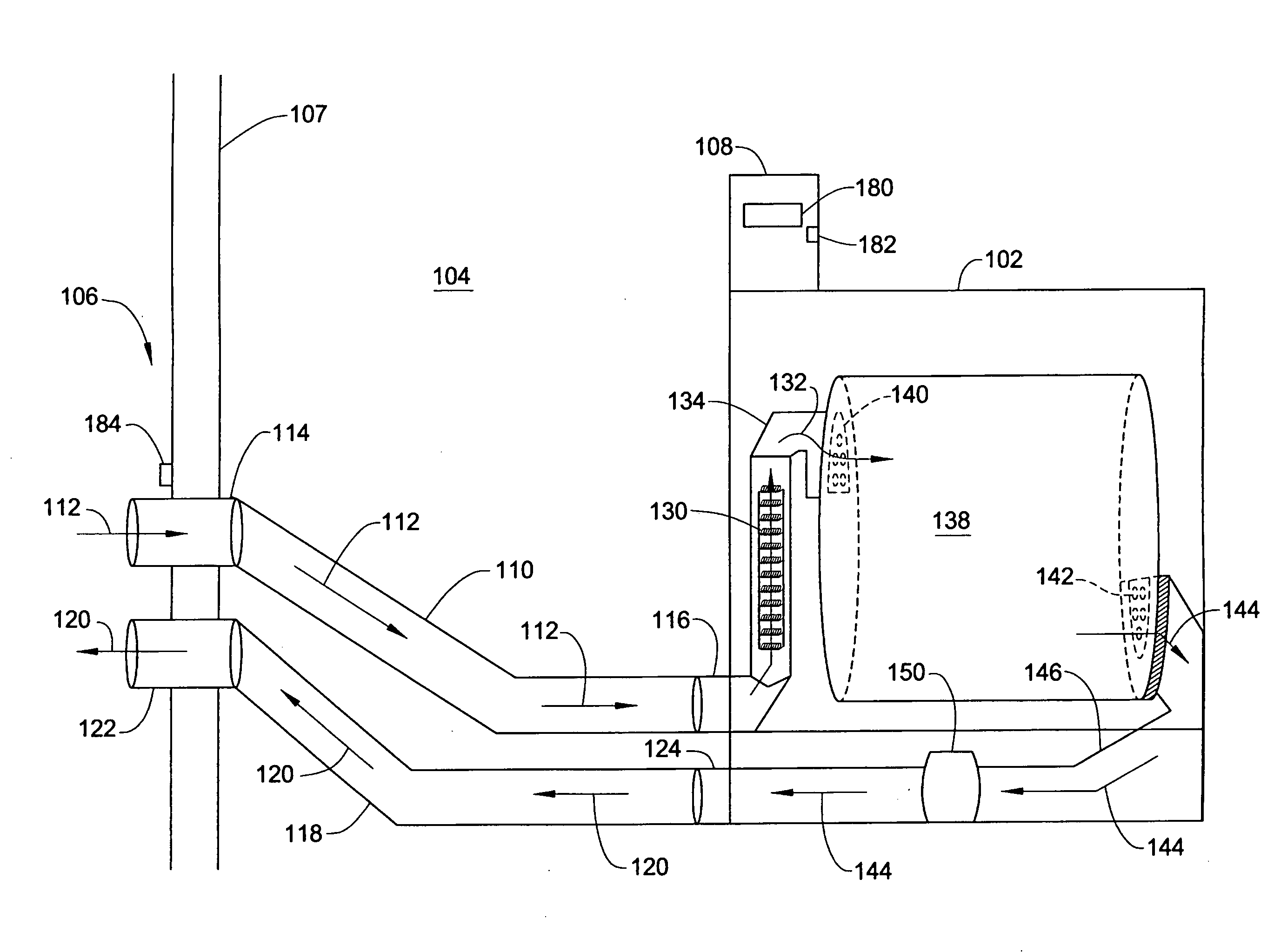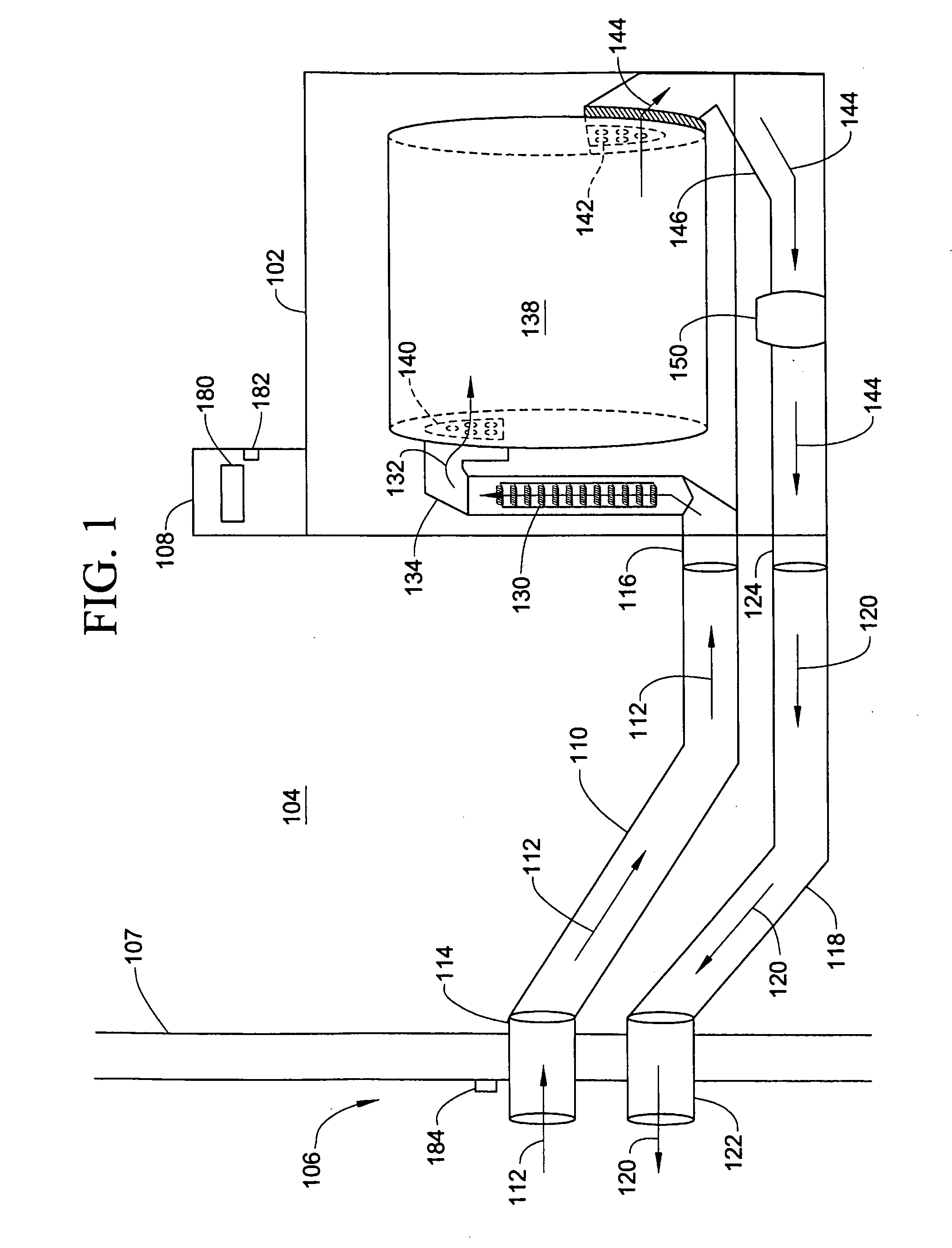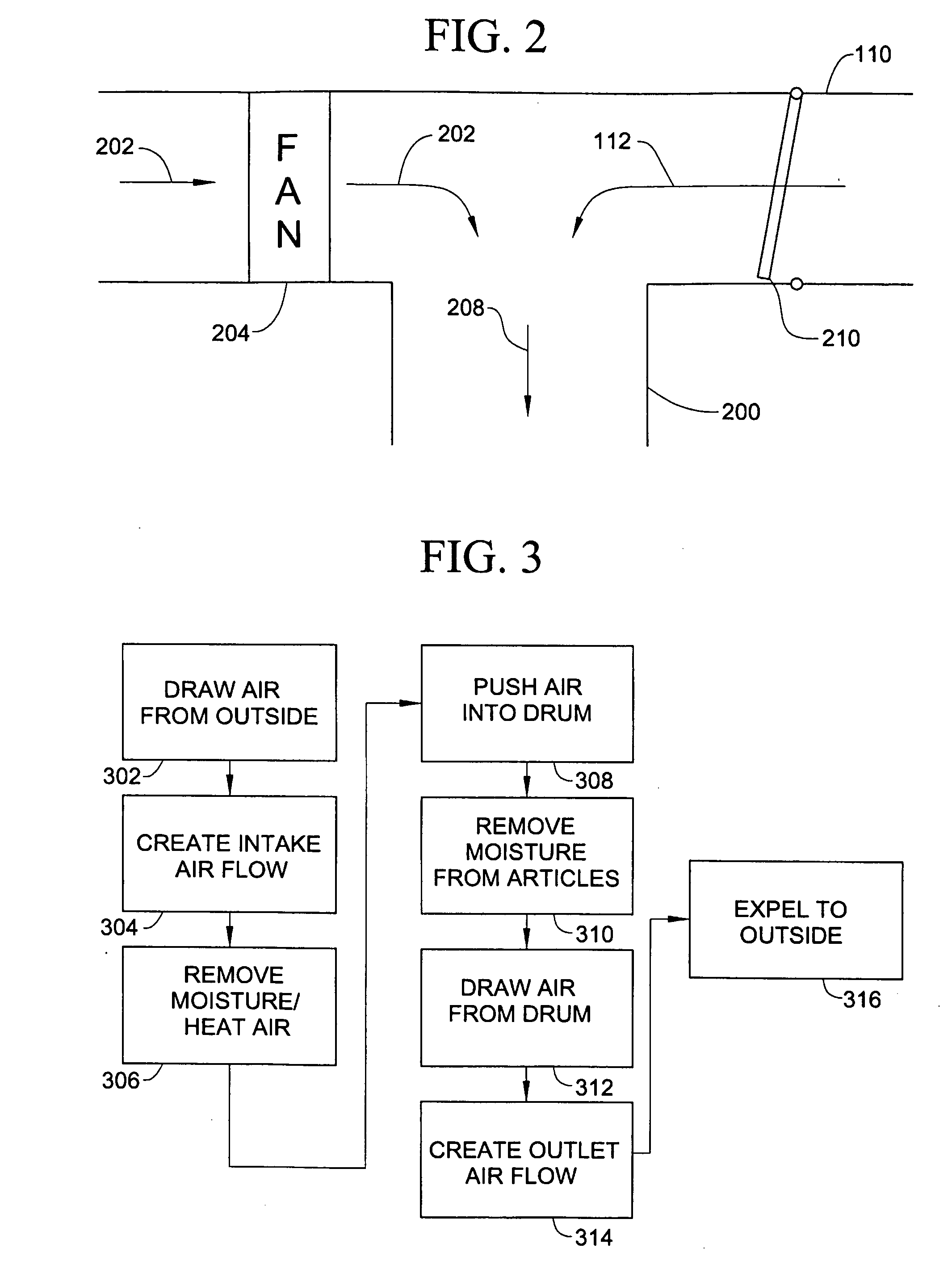Dryer and adapter having ducting system
a ducting system and adapter technology, applied in the field of dryers, can solve the problems of unpleasant and harmful air in high temperature and high moisture content of air within the house or building, and harmful effects on the house or building of the dryer, so as to reduce energy consumption and improve drying efficiency.
- Summary
- Abstract
- Description
- Claims
- Application Information
AI Technical Summary
Benefits of technology
Problems solved by technology
Method used
Image
Examples
Embodiment Construction
[0018]Aspects of the invention are disclosed in the accompanying description. Alternate embodiments of the present invention and their equivalents are devised without parting from the spirit or scope of the present invention. It should be noted that like elements disclosed below are indicated by like reference numbers in the drawings.
[0019]FIG. 1 depicts a dryer 102 having an intake duct 110 and an outlet duct 118 according to the disclosed embodiments. Dryer 102 may use forced, heated air to remove moisture and wetness from articles, such as clothes, towels, fabric, dishes, household items, and the like. Preferably, the articles are contained within a rotating drum housed in dryer 102. The forced air passes over the articles to remove moisture from them. Dryer 102 comprises the components of dryers known in the art, which are not disclosed in great detail here. Essentially, dryer 102 is any dryer that uses heated air to dry articles, such as clothes.
[0020]Dryer 102, however, differ...
PUM
 Login to View More
Login to View More Abstract
Description
Claims
Application Information
 Login to View More
Login to View More - R&D
- Intellectual Property
- Life Sciences
- Materials
- Tech Scout
- Unparalleled Data Quality
- Higher Quality Content
- 60% Fewer Hallucinations
Browse by: Latest US Patents, China's latest patents, Technical Efficacy Thesaurus, Application Domain, Technology Topic, Popular Technical Reports.
© 2025 PatSnap. All rights reserved.Legal|Privacy policy|Modern Slavery Act Transparency Statement|Sitemap|About US| Contact US: help@patsnap.com



